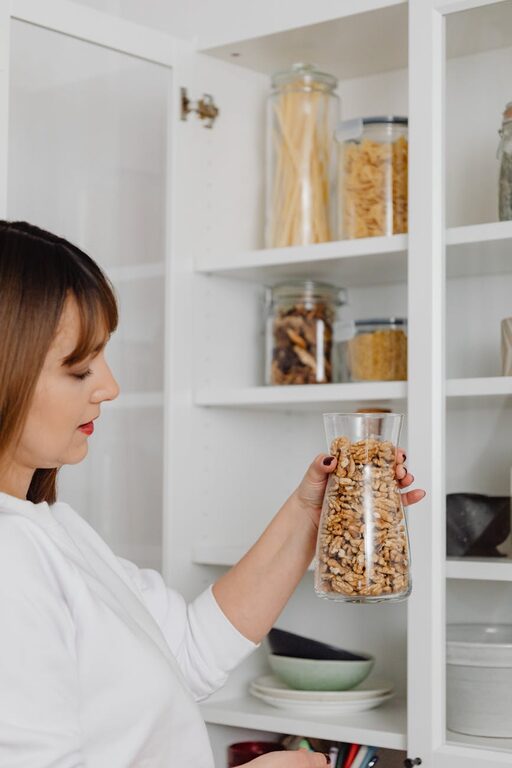Keeping a tidy fridge and pantry can make a big difference in your daily routine. Not only does it help reduce food waste, but it also makes meal preparation faster and more enjoyable. If you’ve ever opened your fridge only to be overwhelmed by clutter or struggled to find what’s in your pantry, you’re not alone. Fortunately, organizing these spaces is easier than you might think. This post will guide you through practical steps to maintain a clean and efficient fridge and pantry.
Why Maintaining a Tidy Fridge and Pantry Matters
Before diving into tips, let’s quickly review why these tasks are worth your time:
– Food safety: A clean fridge reduces the risk of cross-contamination and spoilage.
– Waste reduction: Knowing what you have prevents buying duplicates and helps use food before it expires.
– Time-saving: Organized storage means less time searching for ingredients.
– Stress reduction: A neat kitchen space contributes to a calmer cooking environment.
Step 1: Clear Out and Clean
Start With a Deep Clean
Begin by emptying your fridge and pantry completely. Check expiration dates on all items, and dispose of anything that’s expired, spoiled, or no longer wanted.
Take this opportunity to clean the shelves, drawers, and bins with warm soapy water or a gentle cleaning spray. Wipe down all surfaces thoroughly, then dry before returning items.
Step 2: Sort and Categorize
Group Similar Items Together
Sorting your food into categories keeps things manageable. Consider grouping items like this:
– Dairy products
– Meats and fish
– Fruits and vegetables
– Condiments and sauces
– Grains and pasta
– Snacks
– Baking supplies
– Canned goods
Use Bins and Containers
Clear storage bins or containers can help keep similar items together and easy to access. Label them for quick identification. For example, dedicate a bin for breakfast foods or snacks in the pantry.
Step 3: Make Use of Storage Zones
Organizing the Fridge
Your refrigerator works best when food is stored in appropriate zones:
– Top shelves: Ready-to-eat foods like leftovers, drinks, and ready-made meals.
– Middle shelves: Dairy products and eggs.
– Bottom shelves: Raw meats and fish; keep them in a leak-proof container to prevent contamination.
– Drawers: Fruits and vegetables (separate drawers if possible to control humidity).
– Door shelves: Condiments, sauces, and beverages (not ideal for perishable items like milk or eggs).
Organizing the Pantry
Store pantry items based on how often you use them and their size:
– Frequently used ingredients at eye level.
– Heavy or large items like bags of flour on lower shelves.
– Lightweight or less used items on higher shelves.
– Use stackable containers to save space and protect from pests.
Step 4: Use Clear Containers and Labels
Benefits of Transparency and Labels
Clear containers allow you to see contents at a glance, which helps avoid buying duplicates and minimizes forgotten food. Label containers with the name and the date opened or expiry date.
Try using uniform containers to maximize space and maintain a neat appearance.
Step 5: First In, First Out Method (FIFO)
Place newer items behind older ones so that you use older products first. This method reduces waste and keeps you aware of what food needs to be eaten soon.
Adjust your shelves or storage bins to make this rotation easier, and always check dates when restocking.
Step 6: Set a Regular Maintenance Routine
Weekly Quick Checks
Spend a few minutes each week checking for spoiled or expired items, wiping down spills, and returning out-of-place items. This regular maintenance prevents messes from growing.
Monthly Deep Clean
Schedule a monthly deep clean similar to Step 1. This helps maintain hygiene and reinforces good habits.
Additional Tips for a Tidy Fridge and Pantry
– Avoid overcrowding: Overpacked spaces make it harder for cold air to circulate in the fridge and can hide items in the pantry.
– Dedicated snack area: Especially helpful for families, this keeps snacks contained and easier to manage.
– Use door organizers or small baskets: Great for condiments or small pantry items.
– Freeze extras: If you find excess perishable food, consider freezing portions to extend shelf life.
– Use adjustable shelves: Many fridges have removable shelves—adjust heights to fit your storage needs.
Summary
A tidy fridge and pantry not only keep your kitchen looking great but also improve food safety, reduce waste, and save you time. By clearing out clutter, sorting items, using containers and labels, and setting a maintenance schedule, you can create organized, efficient storage spaces. Give these tips a try and enjoy the benefits of a well-organized kitchen.
—
Do you have other tips or tricks for keeping your kitchen tidy? Share them in the comments below!


